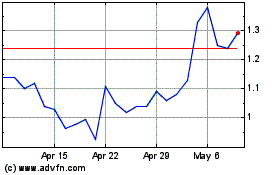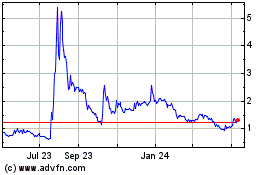By Micah Maidenberg
Life has gone from the party at Tupperware Brands Corp.
Revenue and profits have been sagging for years, leaving
investors sour on the future of the company that has been selling
food containers for 74 years.
On Feb. 24, Tupperware said it would delay filing its annual
report to conduct a probe into accounting issues. Shares fell by
nearly half the next day and closed Friday at $2.60, a fraction of
the $96 they traded at more than six years ago.
Overseas, Tupperware's bets on markets like China and Brazil
have left it exposed to choppy economic growth. In the U.S., it
hasn't been able to arrest a yearslong decline in the size of its
sales force. The company's efforts to draw in customers and sellers
with new kitchen items, e-commerce investments and other
initiatives haven't taken root.
"People just don't have connection with the brand anymore,"
Patricia Stitzel, Tupperware's former chief executive, told
analysts in October, explaining why the company was sponsoring a
pop-up store in New York City for the holidays. She stepped down
from her post in November.
Tupperware drummed up sales over the decades through an army of
independent dealers who plied their sales pitches for plastic
food-storage kits and other kitchen products at home parties. Now,
like Avon and other direct-selling brands, Tupperware faces
questions about whether it can remain relevant as consumers migrate
to shopping online and socializing has moved from living rooms to
apps like Instagram.
"Everyone still thinks of the burnt-orange or mustard-yellow
color wheel, like in the 70s, because that's what their mom had and
their grandma had, " said Brittany White, a 33-year-old event
manager in Indianapolis who stopped selling Tupperware in 2018
after about six months.
Mariam Lively, who lives near San Antonio, has sold Tupperware
items for around 15 years but has scaled back her activity. She
hasn't hosted a party in five years.
"The home parties aren't as popular," she said. "I think a lot
of it is people don't have time to gather."
Christopher O'Leary, Tupperware's interim chief executive, said
the company has a powerful brand in food storage and preparation, a
global presence and the ability to create innovative new
products.
"Tupperware Brands is well-positioned to capitalize on what
consumers want and need," he said.
Tupperware products became available in 1946 when chemist Earl
Tupper first offered a plastic container with an airtight lid. But
sales didn't take off until the 1950s, after he hired Brownie Wise,
a secretary, to build a network of mostly suburban women to host
patio parties. Mr. Tupper sold the business in 1958. It had several
corporate owners before going public in 1996. It expanded overseas
and now gets about three-quarters of its roughly $2 billion of
annual revenue outside North America.
The Orlando, Fla., company had roughly 546,000 active
salespeople around the globe as of September. But its active sales
force in the U.S. and Canada fell to about 184,000 -- less than
half the number it had a decade earlier. New, premium products will
help excite the company's sales force, Mr. O'Leary said.
Last month, Tupperware said it had to delay filing its annual
report as it investigated accounting practices in a beauty business
in Mexico. It expects its overall annual sales for 2019 to fall by
at least 12%, and for this year to fall by at least 10%.
The company also has endured executive turnover. Rick Goings
stepped down as chief executive in 2018 after nearly 21 years as
its top leader; Ms. Stitzel, who replaced him, spent about 18
months in the job. The company is searching for a permanent
leader.
"I don't think there's anyone there who understands direct
sellers," said Douglas Lane, an independent analyst who followed
the company for years and dropped his coverage last month, citing
its challenges.
The Tupperware leadership teams have extensive experience with
direct sales, Mr. O'Leary, the interim CEO, said.
At an investor conference In December, Mr. O'Leary said the
company must find new ways to reach consumers, noting that less
than 5% of sales occur outside its direct-selling force. "I think
we're just starting to scratch the surface," he said then.
Consumers haven't stopped buying reusable storage containers.
U.S. shoppers were expected to buy $1.44 billion of food containers
last year, according to estimates from consumer-research firm
Euromonitor -- an increase from $1.35 billion in 2014.
But other companies, including Newell Brand Inc.'s Rubbermaid
unit and Clorox Co.'s Glad business, have staked out turf with
their own storage offerings. Both brands are sold in stores and on
websites like Amazon.
Pampered Chef, the direct seller of kitchenwares owned by
Berkshire Hathaway Inc., said in September it gets more than half
of its business from its digital operation, up from 10% in
2014.
Consumers' options are plentiful. Discount retailer Dollar
General Corp. sells a range of containers starting at $1 each,
according to its website; Amazon.com Inc. offers a set of 24
containers for $42.99 made by the owner of the Pyrex glass
brand.
"If you go to the younger age group, you have to teach them,
because everything is so cheap and so available," said Michele
Womble, who has sold Tupperware for more than a decade and runs a
showroom in Marietta, Ga.
Some sales agents say their businesses are growing. Beth Rosa,
59 years old, who has been selling Tupperware in Connecticut for
about eight years, said her network generated about $600,000 in
sales last year and the goal is to double that amount in 2020. She
lauded newer products from the company, like a grill designed for
the microwave.
Tupperware has broadened its offerings to include beauty
products and tried different strategies to generate better results.
But finding new ways to stand out won't be easy, former sellers
say, given the company's association with its core products and
old-school parties.
"You can get so many types of Tupperware products on Amazon now.
It's hard to distinguish why this is better," said Ms. White, the
former Tupperware saleswoman.
Write to Micah Maidenberg at micah.maidenberg@wsj.com
(END) Dow Jones Newswires
March 08, 2020 12:02 ET (16:02 GMT)
Copyright (c) 2020 Dow Jones & Company, Inc.
Tupperware Brands (NYSE:TUP)
Historical Stock Chart
From Mar 2024 to Apr 2024

Tupperware Brands (NYSE:TUP)
Historical Stock Chart
From Apr 2023 to Apr 2024
